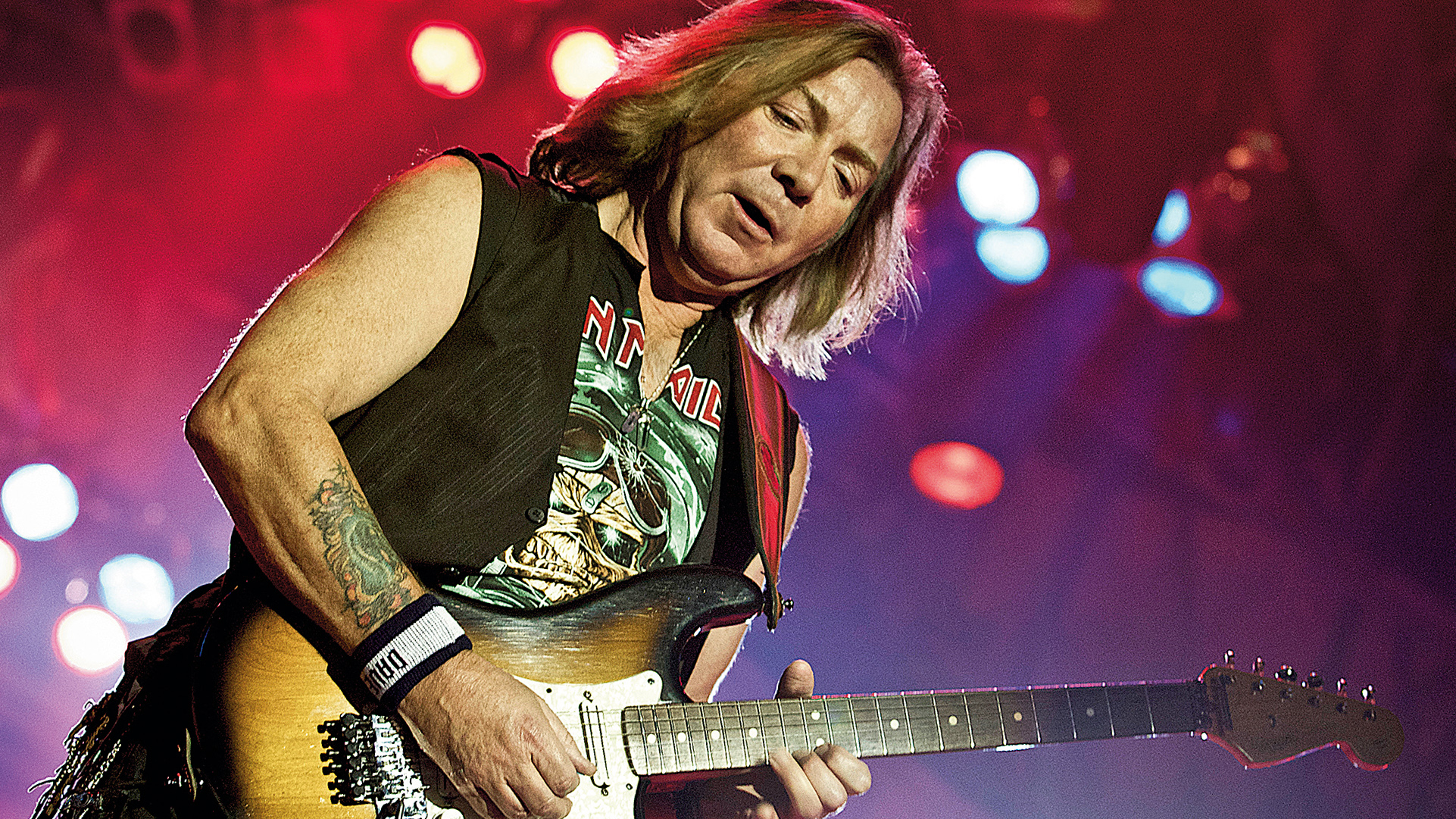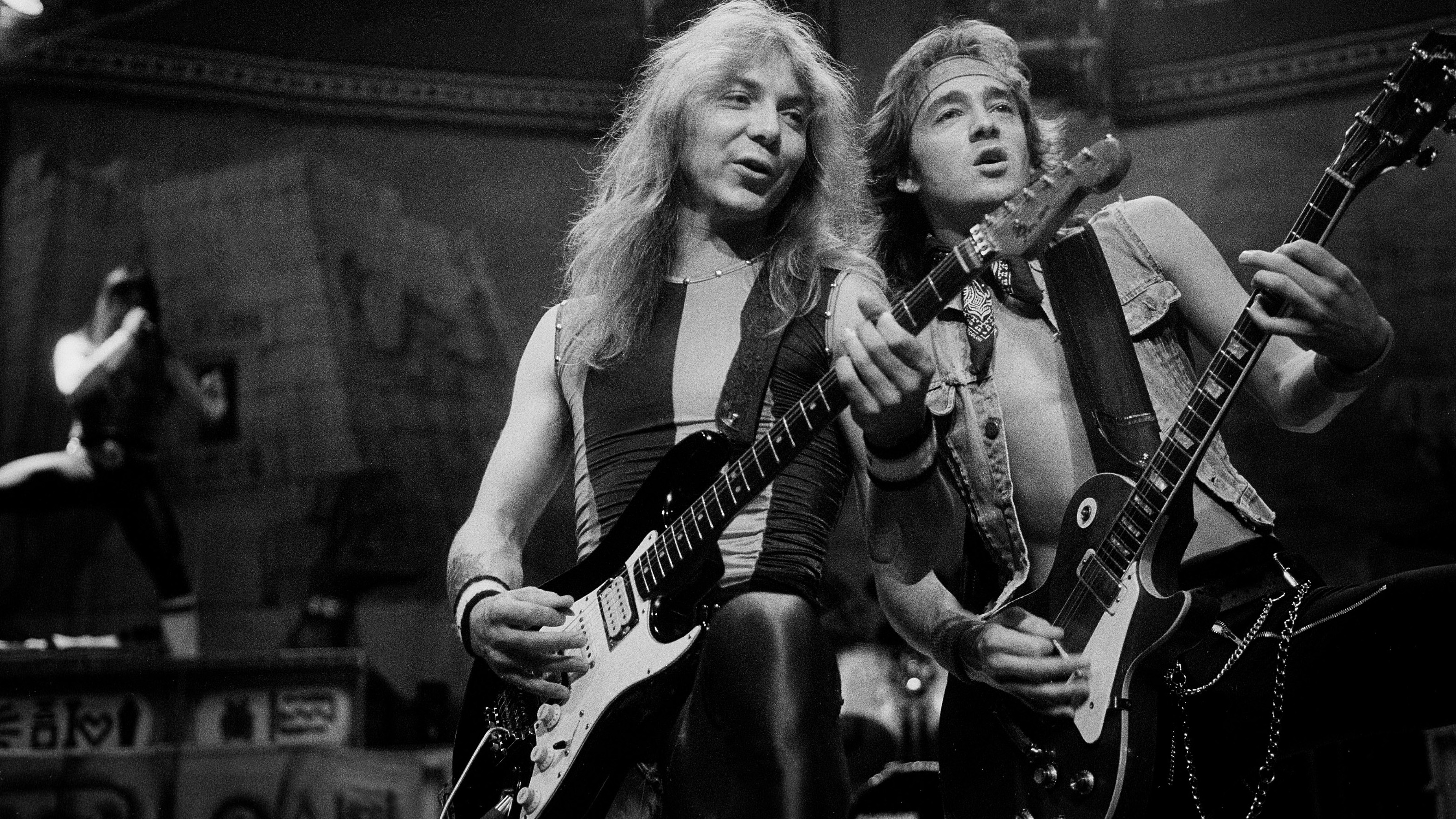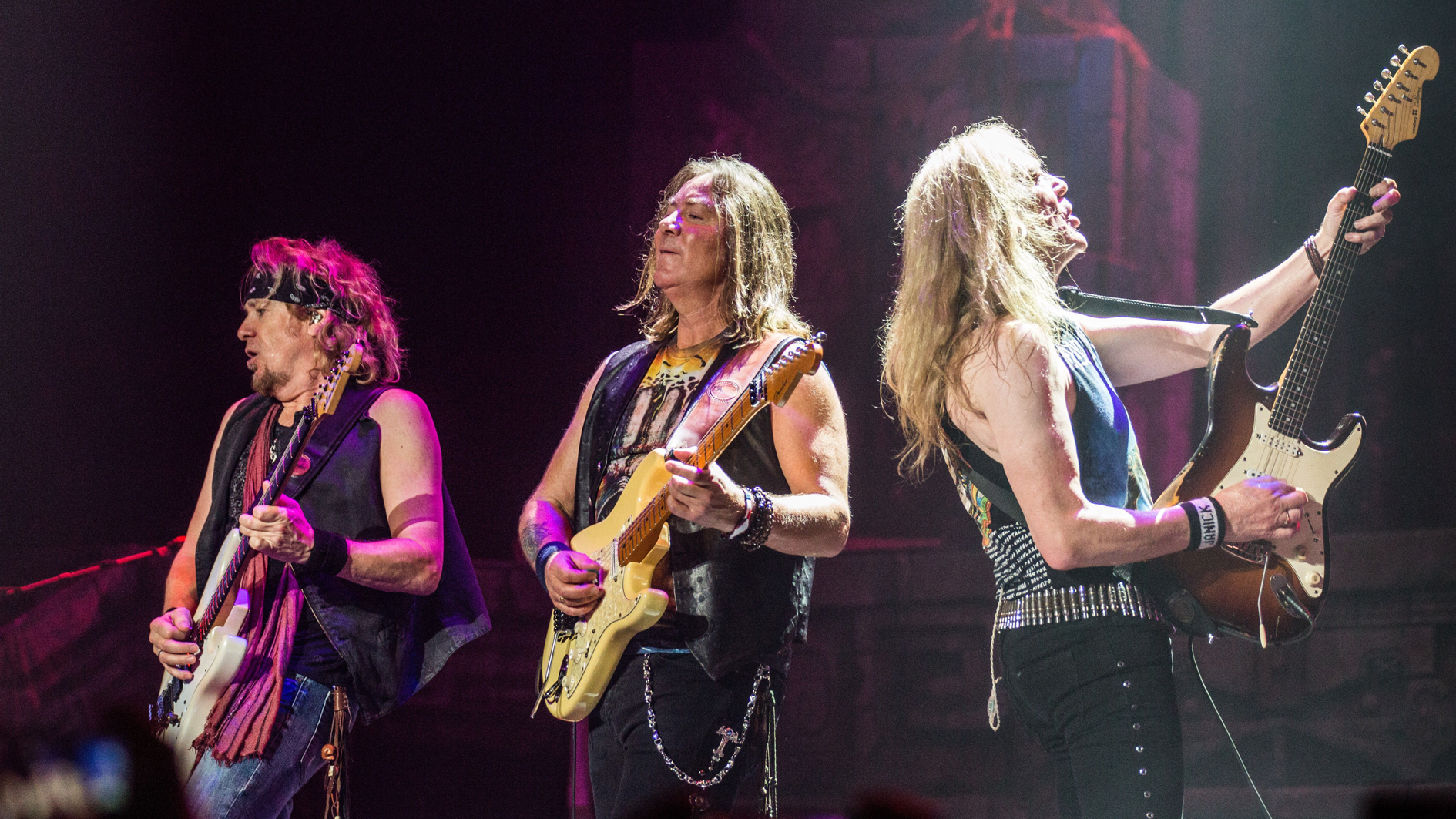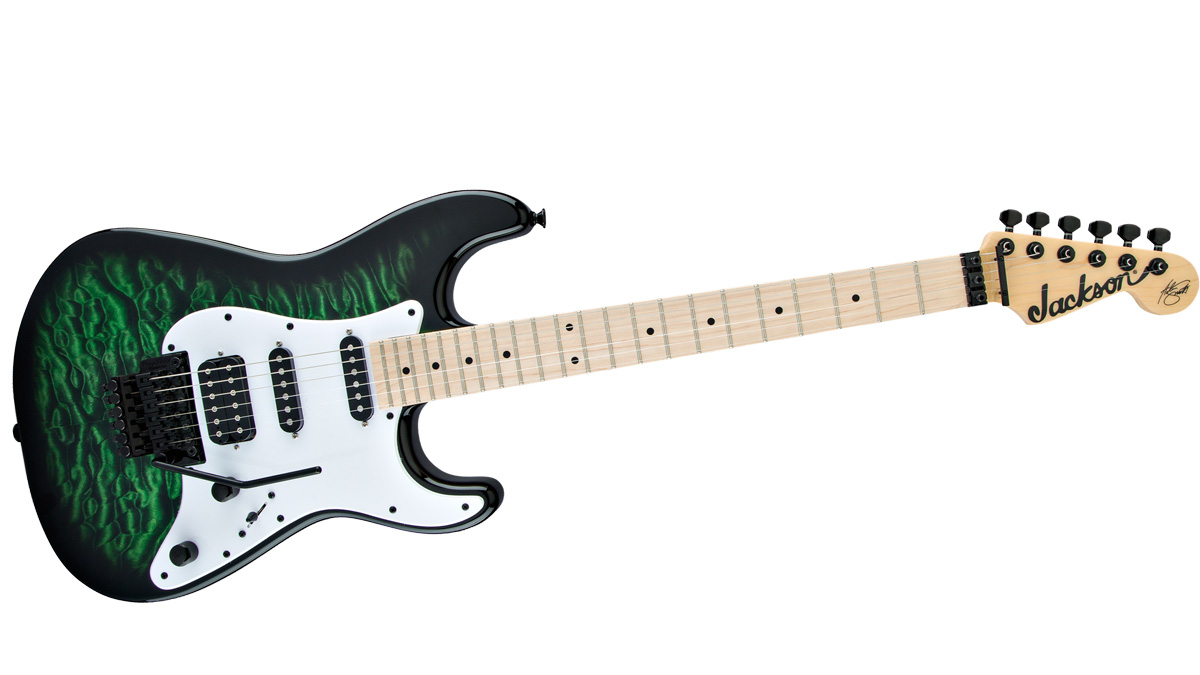6 songs guitarists need to hear by… Iron Maiden
Where to start with the quintessential heavy metal band

Iron Maiden are surely England’s greatest ever metal band and they have built their reputation not only by performing consistently outstanding live shows but also on some of the best music the genre has produced.
Their extensive back catalogue boasts one classic after another and, take it from us, even whittling our list down to just six to recommend wasn’t at all easy. But whittle we have and, if by any chance you’re a guitarist who’s new to Maiden, you’re in for a real treat.
1. Phantom Of The Opera - Iron Maiden (1980)
Looking back on it now the New Wave of British Heavy Metal may seem a little quaint but at the time it represented a huge shift in rock music and, for those of us who were there, it was life-changing.
Nirvana hammered the final nail into its coffin with Nevermind, but some huge bands from both sides of the Atlantic owe their very existence to what was going on in pubs and clubs up and down Blighty in the early 1980s.
Building on the buzz that surrounded their now legendary demo The Soundhouse Tapes, Maiden became the reluctant figureheads of NWOBHM and there wasn’t a track remotely resembling Phantom… to be found anywhere else at the time.
Fronted by professional cockney geezer Paul Di’Anno and featuring the underrated Dennis Stratton on guitar alongside ever-present Dave Murray, the music imaginatively moves through time signatures and tempos, and it sounds as fresh today as it did back then. The approach to the harmony guitars is inspiring and writer Steve Harris makes inventive use of his ability to also play melodies higher up the neck of his Fender Precision.
As Harris told Rolling Stone in 2017: “There wasn’t really anybody playing the stuff we were playing; we were influenced by people like Wishbone Ash with the melodic guitars. But we had a fire in it.”
Want all the hottest music and gear news, reviews, deals, features and more, direct to your inbox? Sign up here.
2. Killers – Killers (1981)
With Stratton replaced by Murray’s old friend Adrian Smith the stage was set for Maiden to realise their potential and many purists consider Killers to be the band’s best album. The title track is the perfect representation of where they were musically at this point and the gruesome lyrics, growled by Di’Anno with real menace, can still cause furtive looks over the shoulder.

Both guitarists have stated that Murray’s solo here is their favourite of his and it’s not hard to see why. Changing the tone to suit the licks he’s effortlessly pulling off by flicking between pickup settings, his speedy runs, unusual choices of notes and the frantic climax are expertly judged, and are in direct contrast to the precise Smith solo that follows it.
The technique involved in playing the merging muted harmonics that herald the verses is fairly straightforward but does hinge on utilising a high gain tone in order to allow those frequencies to really stand out. Whilst continually picking the low E, move your fretting hand smoothly down the neck towards the bridge, just lightly touch the string as you do so.
Play close attention to how Murray does it during the video we’ve chosen and give it a go.
3. Hallowed Be Thy Name – The Number of the Beast (1982)
Taken from an album that includes such iconic tracks as Run to the Hills and The Number of the Beast, it speaks volumes that Hallowed… is often considered as Maiden’s best tune of them all. It’s also a precursor to the lengthy epics that would become a trademark, but no other metal band of the time was doing anything like it, certainly not to a similar level of success.

AI helps musician make an Iron Maiden song and it's called… Power Gravy!
Ushered in by a harmony guitar and bass line underpinned by, of all things, tolling tubular bells, ‘new’ singer Bruce Dickinson shows the expansive range and dramatic delivery that’s made him a legend over the ensuing 38 years. A riff built from phrases that are each slightly different provides the bedrock before a series of licks split off from each other in perfect harmony and the song, driven as ever by Harris’ galloping bass, stomps along.
Just when you thought proceedings couldn’t get any more tense, the tempo doubles and Murray lets loose with an absolute doozy of a solo, all characteristic trills and spills. Smith fires back with some hammer ons and pentatonic tomfoolery before the whole band returns for a thrilling twin-guitar climax as the song’s hero is dragged from his cold cell to meet his doom.
4. Powerslave - Live After Death (1985)
The centrepiece here is a breathtaking lead break by Dave Murray and if you’re undecided as to just which of his solos to learn first, it has to be this one. Using the neck pickup’s warm tone his majestic phrasing adds real passion to a story describing the lament of an undead (or is he?) pharaoh and, as proceedings gather pace, Smith contributes yet another measured solo as a counterpoint.
The baton is handed back to Murray who sees things off with a passage coloured with swirls from his trusty MXR Phase 90 before the band settles back into the deceptively difficult main riff.

Interview: Iron Maiden's Adrian Smith and Dave Murray on The Book Of Souls
We’ve chosen the version from Live After Death and as a whole it has to be one of the greatest live rock albums of all time. The must-see long-form video, filmed at Long Beach Arena, is evidence of a band at the absolute height of its powers although the tour, comprising 189 shows spread over a whopping 331 days, proved to be a real slog and the cost to all five members was almost terminal.
Dickinson was so fried that he seriously considered quitting and even the ebullient Harris had felt the pace, confirming: “When we got to the end of the Powerslave tour was the first time where we said, ‘All right, let’s take some time off or else we’ll all end up in the funny farm.’” As a result the band disappeared for most of the next 12 months.
5. Stranger In A Strange Land – Somewhere in Time (1986)
After the rigours of the World Slavery Tour something new was needed and the band initiated what amounted to a significant modification of their sound. Gone, for now at least, were the Marshalls to be replaced by the unmistakably shiny sound of the Gallien-Krueger 250ML amp (Maiden used the rackmounted version, the 250RL) and its tone is what we hear on both Somewhere In Time and most of 1988’s Seventh Son Of A Seventh Son.

Adrian Smith went even further, incorporating the guts of a Roland G-707 guitar synthesiser into a forerunner of his signature Jackson San Dimas, and he’d use it recreate the washes that anchor SIASL’s verses on stage. Mixing the technology of the day with Maiden’s customary bombast suited the album’s futuristic vibe nicely and not only is this song probably the finest on the album, we also feel it’s up there with the best they’ve ever produced.

With a simple yet striking riff fuelling the telling of an engrossing story, a fist-pumping chorus gives way to a superlative Smith solo that builds from restrained and understated notes to a full-on rock workout brimming with dynamic melody, and you feel that every phrase was carefully considered before being included. Harris may be the driving force behind the band but Smith is its musical lynchpin and this is a song that bears unlimited repeated listenings.
6. Paschendale - Dance of Death (2003)
The facts surrounding the Battle of Passchendaele, as it was spelled in Flemish, are harrowing. Taking place around close to the razed Belgian town of Ypres between July and November 1917, at least 495,000 Allied and German soldiers died. According to the Encyclopaedia Britannica it’s remembered as ‘…a symbol of the worst horrors of the First World War.’
It’s certain that songwriters Smith and Harris were well aware of the subject’s significance and the pathos of the resultant eight or so minutes starts as it means to go on with a simple hi-hat and mournful hammered-on riff. A series of complementary tempos, licks and riffs mesh into one glorious whole and, as Harris’ crushing bass chords increase the music’s weight, notice how the rhythm guitars operate within different chord inversions to add yet more girth.
An instrumental passage makes use of the 18 available guitar strings as each of The Three Amigos, as the guitarists are referred to by Maiden’s Killer Krew, takes a solo and it’s intriguing to hear the differing styles in such close proximity; Murray throwing shapes with his neck-pickup as ever he has, Smith aping his hero Michael Schenker with a touch of wah, and Janick Gers employing his customary ‘spray and pray’ approach.
As with Metallica’s One, the crafted lyrics and atmospheric arrangements are so immersive that you can almost taste the blood, and Paschendale is an evocative song commemorating a horrendous event in history.
Simon Bradley is a guitar and especially rock guitar expert who worked for Guitarist magazine and has in the past contributed to world-leading music and guitar titles like MusicRadar (obviously), Guitarist, Guitar World and Louder. What he doesn't know about Brian May's playing and, especially, the Red Special, isn't worth knowing.